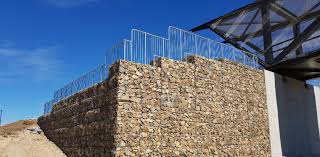Gabions and Carbon Footprint Reduction: A Green Approach
Within the field of structure advancement, the imperative to shield and conserve the environment is becoming increasingly urgent. Gabions (gabiony), because of their functional programs and eco-warm and friendly qualities, offer a compelling answer to attack an equilibrium between infrastructure needs and environment safety.
At its core, a gabion (gabiony) is an easy yet clever composition made up of cable mesh baskets full of rocks or some other locally accessible resources. This straightforward design method gives itself well to various applications, from retaining surfaces to water flow methods, generating gabions an adaptable device in the system toolkit.
Probably the most significant advantages of gabions is compatibility with environment preservation objectives. As opposed to conventional components including cement surfaces or embankments, gabions provide for organic processes to keep on unhindered. Their permeable style makes it possible for h2o to circulate by way of, stopping deterioration and promoting groundwater recharge. This attribute is particularly essential in locations vunerable to floods or in which preserving natural hydrological methods is vital.
Furthermore, gabions could be built using locally sourced components, lowering the enviromentally friendly affect connected with travel and extraction. Through the use of indigenous rocks or reprocessed aggregates, assignments can lessen carbon pollutants and alleviate pressure on organic resources, and thus fostering sustainability.
In addition, gabions have the possibility to further improve biodiversity and environmental durability. The interstitial areas between stones produce microhabitats for a number of microorganisms, which range from plants to insects and tiny mammals. Moreover, the architectural complexness of gabion setups can imitate normal landforms, delivering shelter and breeding grounds for animals.
From a functional standpoint, gabions offer cost-effective remedies for facilities advancement. Their easy development procedure needs much less specific effort and products when compared with conventional choices, causing lower all round project charges. Moreover, gabions are highly flexible and can be modified or broadened to fit changing demands or website problems.
In summary, gabions stand for a synergy of infrastructure and environmental stewardship, providing a environmentally friendly strategy to growth that reconciles individual requires with environmental dependability. By utilizing the inherent attributes of locally readily available materials, gabion components not simply fulfill functional needs but in addition contribute to the preservation and advancement of all-natural ecosystems.


